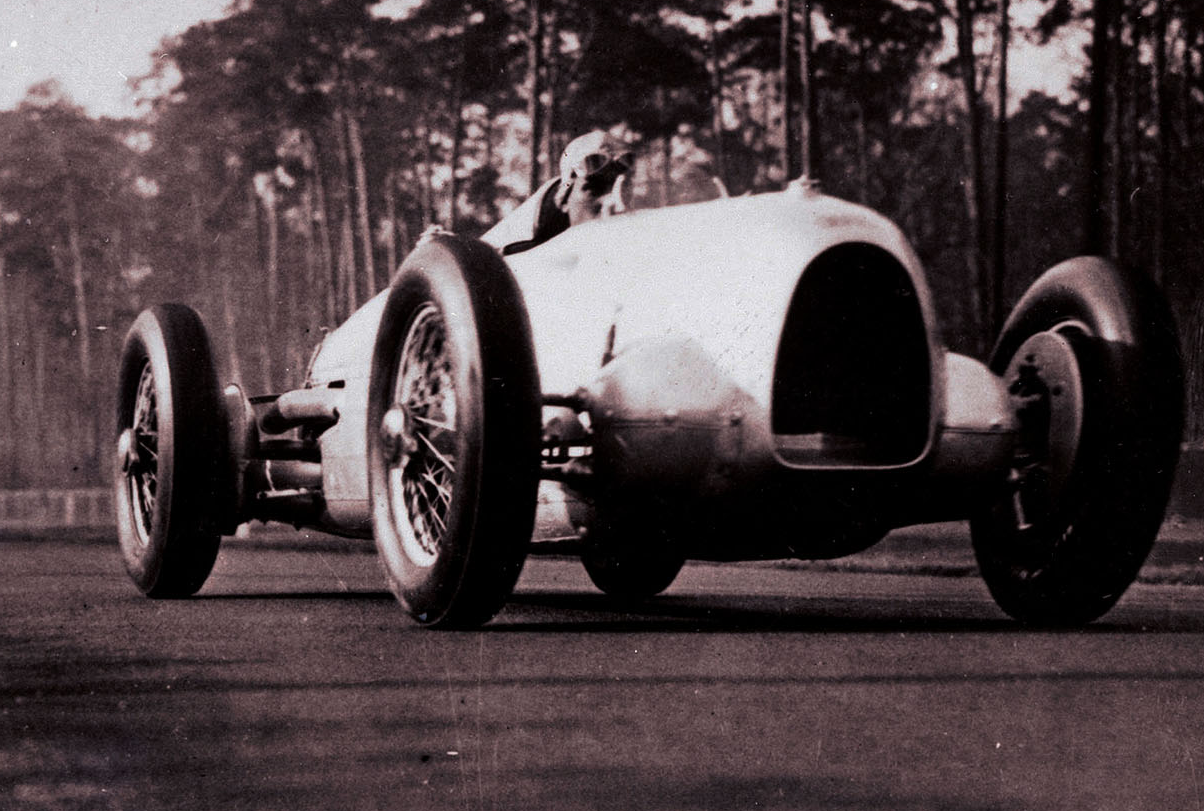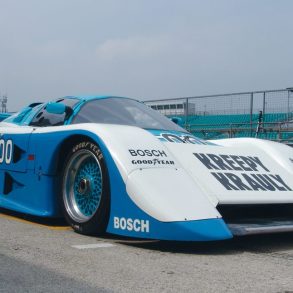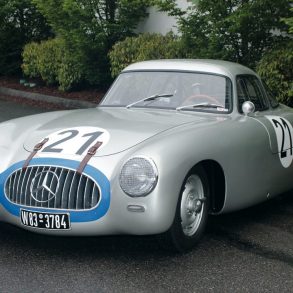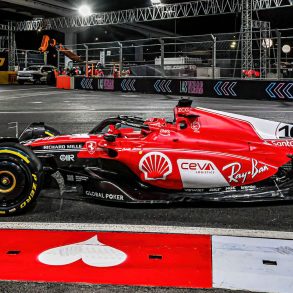Silver Arrows Grand Prix Drivers
The Silver Arrows of Mercedes and Auto Union were formidable to say the least. The drivers were equally legendary. On this page we take you through all the drivers that made their mark driving for the Silver Arrows team.
…Youthful impetuousness and courage are not enough, nor is the will to succeed. To be a driver means that one must be part of the machine for hours, hands at the wheel and gear lever, feet on throttle, clutch, and brake, and eyes on the revolution counter, water, and oil gauge. God help the man who loses control for even a fraction of a second, or who is mastered by emotions and thoughts concerning matters other than racing. The machine will kill him without a doubt… Rudolf Caracciola
Rudolf Caracciola

Louis Chiron

Rene Dreyfus

Luigi Fagioli
Luigi Cristiano Fagioli, nicknamed “the Abruzzi robber”, was an Italian motor racing driver. He is currently the oldest driver to win a race in Formula One, also being the only race winner born in the 19th century. his talents were considerable and for the 1934 season he was lured away by Mercedes to drive one of their Silver Arrows with the brilliant Hermann Lang as his chief mechanic. The move proved successful for Fagioli but his relationship with the German team manager and co-drivers was extremely difficult. In his very first race for Mercedes, one their cars dominated, a furious Fagioli abandoned his vehicle after having been given orders by team manager Alfred Neubauer to stay in second place and allow fellow Mercedes driver Manfred von Brauchitsch to win. Despite the problems, Fagioli remained part of the German team, earning his second consecutive Coppa Acerbo and together with Rudolf Caracciola, drove a Mercedes W25A to claim his second straight Italian Grand Prix title. Following this, Fagioli went on to take first place at the Spanish Grand Prix at the Circuito Lasarte. More about Luigi Fagioli.
Tazio Nuvolari
Tazio Giorgio Nuvolari was an Italian racing driver. He first raced motorcycles and then concentrated on sports cars and single-seaters. His victories – 72 major races, 150 in all -included 24 Grands Prix, five Coppa Cianos, two Mille Miglias, two Targa Florios, two RAC Tourist Trophies, a Le Mans 24-hour race, and a European Championship in Grand Prix racing. Ferdinand Porsche called him “the greatest driver of the past, the present, and the future”. His relationship with Ferrari deteriorated during 1937, and Nuvolari raced an Auto Union in that year’s Swiss Grand Prix. He rejoined the Auto Union team for the 1938 season and stayed with them through 1939 until Grand Prix racing was put on hiatus by World War II. More about Tazio Nuvolari.
Hans Stuck

Bernd Rosemeyer
Bernd Rosemeyer was a German racing driver and speed record holder. He’s considered one of the greatest racing driver of the pre-war era. Even though he wasn’t a member of the Nazi party, he was made a member of the SS for propaganda purposes and held the rank of Hauptsturmführer. In only his second ever Grand Prix, at the daunting Nürburgring, Rosemeyer took the lead from the great Rudolf Caracciola and was almost in sight of the finish line when he missed a gear and was overtaken. However, in subsequent years he made up for this mistake by winning three consecutive races at the Nürburgring, one famously in thick fog. Later in 1935 he won his first Grand Prix at the Brno Masaryk Circuit in Czechoslovakia. More about Bernd Rosemeyer.
Richard Seaman

Achille Varzi

Manfred von Brauchitsch
He was called die Pechvogel, the unlucky bird. He was known more for the races that he lost than those that he had won, but to dismiss him as a journeyman driver would do him a great disservice. While not at the level of his teammates Caracciola, Fagioli and Lang he was an extremely fast and courageous driver. What he was lacking was the sensitivity for his car that would guide him in when to push and when to hold back. Brauchitsch won three Grands Prix – the 1934 ADAC Eifelrennen which saw the first appearance of Silver Arrows Mercedes Race cars, the 1937 Monaco Grand Prix (considered his greatest victory), and the 1938 French Grand Prix. His fastest lap in the 1937 Monaco race (1 minute 46.5 seconds, 11.9 seconds faster than the old record lap) set a record that stood for 18 years. He was twice runner-up in the European Championship, in 1937 and 1938, and finished third in 1935. More about Manfred von Brauchitsch
Antonio Brivio
Born in Biella, Italy “Tonino” Brivio began racing with an 1,199cc supercharged Derby in 1927. In 1934 he joined Bugatti, and drove a Type 59 to 2nd place while setting fastest lap in the Belgian GP. The German teams boycotted the race when the Belgian Customs Authorities attempted to levy a 180,000 franc duty on their special racing fuel. He would gain his greatest success in sports cars winning the Targa Florio in 1933 and 1935 in addition to the Mille Miglia in 1936.
Phi-Phi Etancelin
Born in Rouen in 1896, Philippe, or Phi-Phi as he was called by his friend, began competing in hillclimbs and speed trials in a Bugatti. In 1927 he scored his first big victory, winning the Grand Prix de la Marne at Reims. Etancelin did most of his racing as a private entrant but in 1935 he joined the Scuderia Sub-Alpina, Driving a new 3.7 liter Maserati he fought a tremendous duel with Caracciola for 2d place at Monaco in 1935. Only after his brakes began to fade did Etancelin have to settle for 4th place. Though considered one of the best French drivers between the wars he went into temporary retirement in the face of German domination. Returning in 1938 he drove a Talbot to 3rd at Pau and 4th in the French GP at Reims though in each race he was several laps behind the winning German car.
Guiseppe Farina
Farina was born in 1906 in Turin, the son of the famous coach building brothers and was the nephew of Pinin Farina. Farina or “Nino” as he was called had a fiery driving style and woe the driver that crossed his path. His driving impressed Tazio Nuvolari who became his friend and mentor. Driving for Alfa Romeo in 1938, he raised quite a few eyebrows including German ones as he harassed their cars not allowing them the easy victories that they were becoming accustomed too. Many predicted great things for this driver but World War II would intervene. After the war he made good on all of the predictions by becoming the first World Champion.
Guy Moll
Sometimes death cruelly robs the motor racing world of a future champion. That tragedy occurred at the Coppa Acerbo in 1934. Moll born in Algeria to a Spanish mother and French father started his career racing a Lorraine-Dietrich in his homeland. He soon came to the attention of fellow Algerian Marcel Lehoux who took him to Europe in 1932 where in his first race he finished third to the Alfas of Sommer and Nuvolari. 1933 was a year of learning and in 1934 he joined the Scuderia Ferrari. The beginning of the new season saw him win at Monaco and Avus in addition to a close second to Varzi in Tripoli. Moll was a fearless driver who was not overwhelmed by the German teams. Enzo Ferrari would later compare him to the great Italian Tazio Nuvolari. At his last race, the Coppa Acerbo he was battling the Mercedes of Fagioli for the lead and was killed while attempting to lap the Mercedes of Ernst Henne. More about Guy Moll.
Raymond Sommer
Born in 1906, the son of a rich French felt manufacturer Sommer was famous for his never say die attitude. His countrymen nicknamed him “Coeur de Lion”. Not shy about working on his own cars he was famous for the “box of beautiful shining tools” he always had with him. In 1932 he shared an Alfa Romeo with Chinetti at LeMans, driving 21 hours of the race when his teammate fell ill. Exhausted he still managed to finish the race in first place. Sommer was an also ran while the German cars were dominant but still managed a 4th place at Tripoli in 1938 behind a trio of Mercedes.
Felice Trossi
The Italian aristocrat was a great sportsman who love speed whether in speedboats, airplanes or race cars. He was an early financial supporter of the Scuderia Ferrari and would become its President. What was sometimes overlooked was that he was actually a very quick driver who passed Nuvolari in an identical car while racing round-the-houses at Biella. In 1938 he caused a sensation driving a 8CTF Maserati in which he set fastest lap during the Grand Prix at Tripoli He competed for the lead against the German teams before mechanical problems ended his race.




















